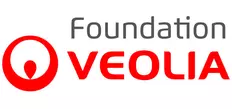
Environment and Biodiversity
Place
Le Mesnil-Aubry, France
Sponsor
Pascal Peslerbe
Grant
€20,000 to the Selection Committee at 2011/10/20
Project leader
Conservatoire des Animaux en Voie d'Extinction (Cavex)
"Would you believe that at Mesnil-Aubry, right in the flight path of aircraft landing in Roissy, 600 exceptional animals cohabit, many of them the last representatives of their species, and that Doctor Quinque, who was endowed with extraordinary talent and tenacity, renowned across the world for these attributes, succeeds in making them reproduce? In our very material world, the Quinques have devoted their world to the conservation of endangered species, offering them as a gift to future generations!"
Pascal Peslerbe
Conservatoire des Animaux en Voie d'Extinction (Cavex), a nonprofit association, operates under the technical and ethical management of a scientific committee derived from the French National Museum of Natural History (MNHN), the National Veterinary School of Maisons-Alfort and Institut Pasteur. It enjoys the support of many institutions: Unesco, Institut de France, Ministry of Ecology, International Union for the Conservation of Nature (IUCN), Commission of the French Republic for education, science and culture, and the National Society for the Protection of Nature.
The rarest species, for future generations
In 2002, by notarized deed, Doctor Henri Quinque and his wife gave Cavex, the large collection of endangered animals that they had created over a 40 year period, making available the premises which accommodated them free of charge. This constituted an exceptional genetic strongbox of 600 rare animals (monkeys, psittacines and other birds), many of them protected by privileged agreements with other nations. Through exhibitions and traveling workshops, the nonprofit raises the awareness of the public, especially the school public, in the defense of the environment. It safeguards and ensures the reproduction of endangered species to reintroduce them into the wild, supports scientific research in partnership with the MNHN, and trains many trainees every year. With the world's largest group of cagous raised in captivity, Cavex is working hard to reintroduce this endemic bird of New Caledonia, classed by the IUCN among the world's 12 most endangered birds.
Appropriate premises and modern educational tools
The premises of the Conservatoire require the installation of a heating system suitable for the various species and the replacement of many aviary panels. The education operations of Cavex are also growing steadily, with projects at Cité des Sciences de la Villette and the General Council of the Val-d'Oise, so that the nonprofit has to acquire modern audiovisual hardware (videoprojectors, television, PCs, etc.).
The Cavex budget is insufficient to make the necessary investments and cover its operations, despite the backing of many donors: Maison de la chasse et de la nature, Departmental Directorate of Labor and Vocation Training, Transatlantic Bank, Carrefour. It therefore has applied to private foundations, including the Veolia Foundation, which is happy to join in the outstanding action of the admirable Quinques.

